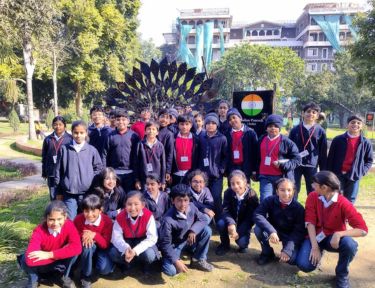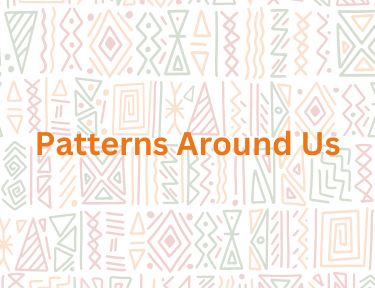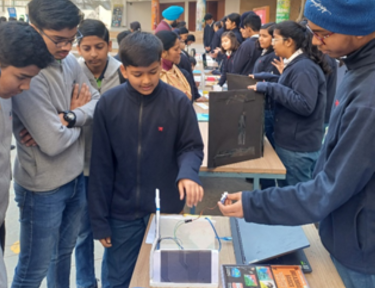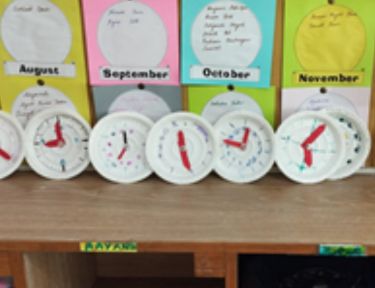


A BOOK OF TIME
About the project
The objective of this project was to foster a comprehensive understanding of the multifaceted aspects of time in the students of class IV. Students were encouraged to delve deeply into various dimensions of time, including its mathematical underpinnings, historical significance and representations, and practical applications in the modern world, such as travel, everyday chores, or work environments. It is aimed at engaging learners in real-world contexts.
Driving Question
How much time do you take to reach school?
Process
We used building a clock as the entry event to familiarise students with the concept of time and its units. Students created their very own ‘Analog Clocks’ using disposable plates. With colourful plates and lots of creativity, they made clocks that ticked! A simple plate transformed into a time-telling wonder!
Our exploration into Project-Based Learning (PBL) began with a discussion led by the driving question, where each participant shared their daily commuting time to school. Through this, we delved into ways in which time duration was influenced by factors like traffic and weather conditions. Immersing ourselves in ‘Minute to Minute’ games, we gained an understanding of the fleeting nature of a minute. We recorded the time dedicated to activities such as room cleaning and milk boiling.
To elevate our proficiency in reading time, we embraced Time Puzzles. These puzzles required tile matching within groups, fine-tuning our perception of time. Additionally, we undertook unravelling product expiration dates, deciphering packaging months, safe consumption periods, and shelf-life durations—enhancing our grasp of elapsed time.
As a pivotal element of our Friday Project, we crafted worksheets categorized to encompass aspects of time reading, timelines, and elapsed time. To optimise the process of creating our book, we attended an expert talk by graphic designer Ms. Deepika. Under the guidance of Ashu Ma’am, we polished the final worksheets during computer class sessions. We created a book cover that harmonised with our content.
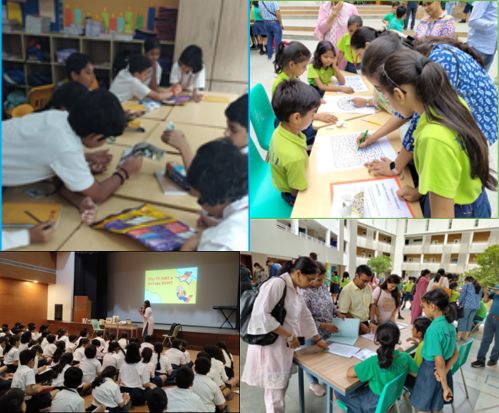
Project Culmination
The culmination of the project was held during the PBL Exhibition Day on 11th Aug 2023. The event began with a presentation by students where they communicated their project-based learning experiences and insights with the audience. The students captivated parents with their active participation. After the presentation, the parents moved to various stations with games hosted by the students based on the theme of ‘time,’ such as ‘Match-it-Up’, ‘Do You Know’, Timelines’, ‘Bingo’, and more. These activities not only reinforced the concept of time but also integrated elements from other subjects, such as Hindi and English. For instance, in Hindi, the students participated in a time-bound game to arrange the letters in the Varnamala, while in English, they did the same with idioms. To add to the excitement, a series of games was added, which included outdoor activities like ‘Racing against Time’, which physically engaged the participants and parents.
These exhibits, games and products allowed visitors to actively participate and learn about reading time, measurement, and conversion. Through dice rolls, trivia questions, and time-related challenges, participants gained a hands-on understanding of time in a playful environment.
The exhibition received an overwhelmingly positive response from the attending parents, who praised its engagement and educational value. They appreciated the interactive learning experience provided by the event, which effectively served as a celebration of the students’ accomplishments in their learning journey.
The students’ learning efforts were beautifully encapsulated within the student-crafted books. The collection of books displayed the fusion of knowledge, creativity, and collaboration and the depth of their engagement and understanding. Working cohesively in 15 distinct groups, each tasked with exploring a different facet of the subject – encompassing traditional, cuckoo, analogue, digital, and smart timepieces – the students embarked on an exploratory journey of time.
These thematic books were meticulously crafted, incorporating a multifaceted approach to the subject matter. Within the pages of each book lay a treasure trove of insights: delving into the historical underpinnings of the timepieces, sprinkled with intriguing and captivating fun facts that illuminated the subject from various angles. But the books did not simply end at passive reading; they also extended an interactive dimension through engaging worksheets woven seamlessly into the themes. This synthesis of information and interactivity served to deepen the students’ connection to the subject matter and fostered a more comprehensive understanding.
The most enticing aspect of this endeavour was the formation of creative teams, where students acted as question writers, illustrators, designers, and editors for each book project. The experience of functioning within a creative team not only instilled a sense of responsibility and ownership within the students but also highlighted the multifaceted nature of collaborative efforts.
For parents, these books served as a window into their child’s educational journey. Beyond merely appreciating their child’s individual contribution, parents could witness the intricate mosaic of teamwork, recognising their child’s role as a vital piece within the larger collaborative puzzle.
Teacher Reflection
The Time project turned out to be an enriching journey not just for the students but also for the teachers. As educators, we had the privilege of observing firsthand how real-world examples can seamlessly integrate with classroom subjects, sparking genuine understanding and engagement. Throughout the duration of the project, each student not only took on the role assigned to them but also went beyond, demonstrating their eagerness to actively participate and contribute.
The project’s design facilitated a remarkable avenue for students to express their creativity and harness the power of collaborative teamwork. Witnessing how each student leveraged their individual strengths within a group dynamic was both inspiring and illuminating. The project effectively served as a platform for students to not only learn mathematical concepts but also apply them in innovative and contextually meaningful ways.
The project highlighted the potency of merging theoretical knowledge with real-world applications, underlining the importance of hands-on, experiential learning.
In conclusion, the culmination of our project through these meticulously crafted books not only encapsulated the students’ mastery of the subject matter but also celebrated their creativity and collaborative spirit. The project transcended the boundaries of traditional education, displaying the power of experiential learning, collaboration, and the seamless integration of diverse skills.








